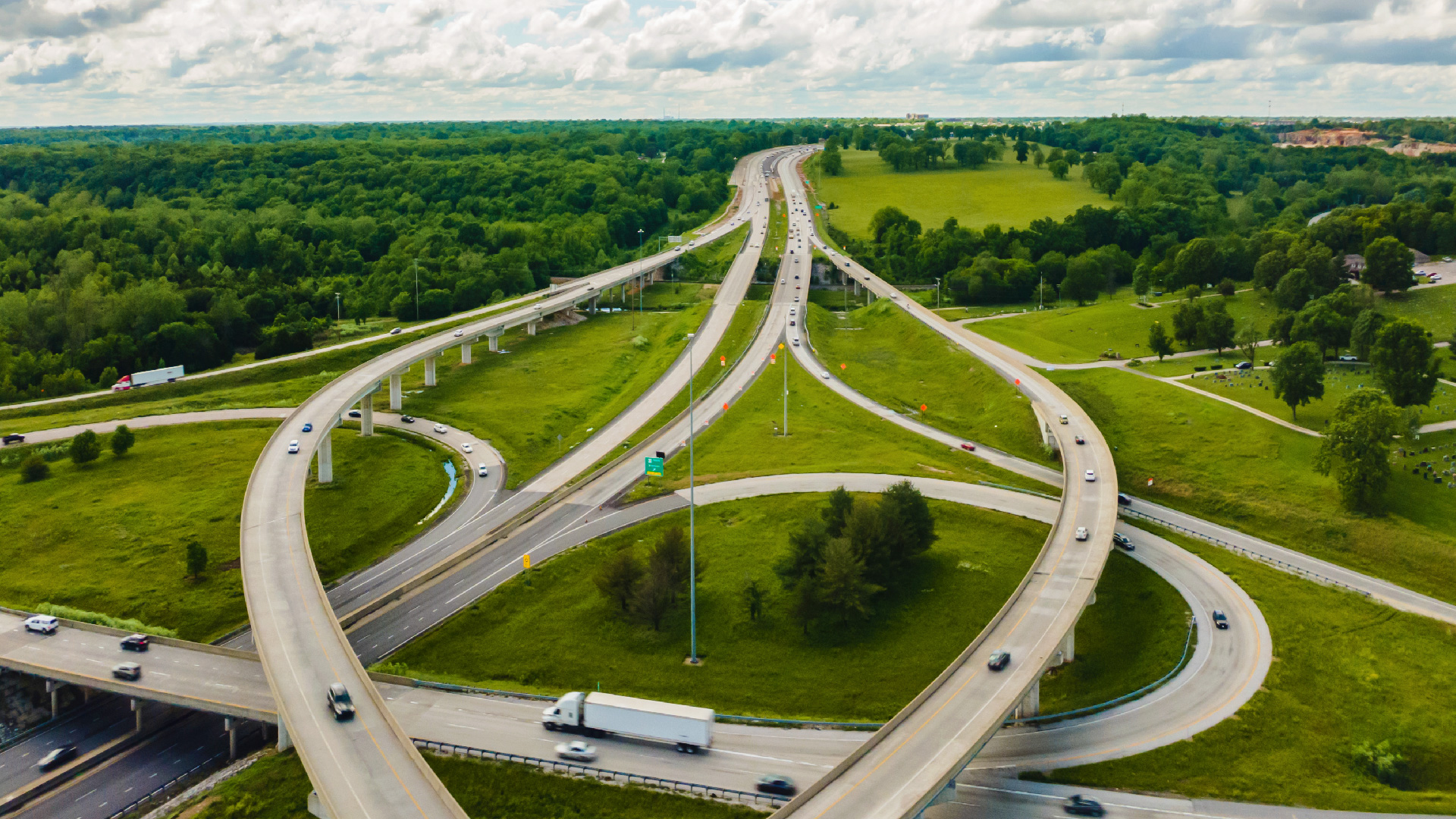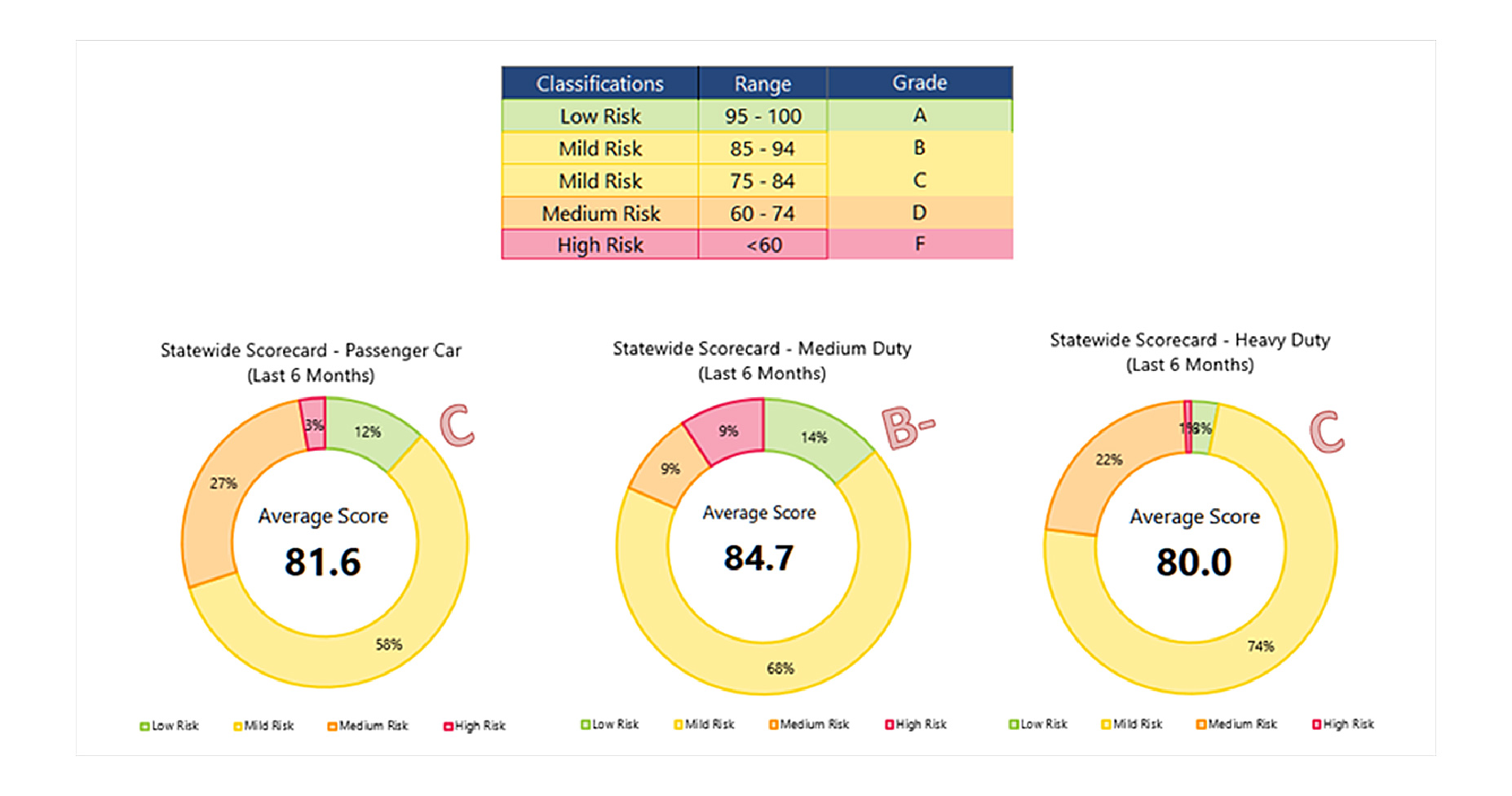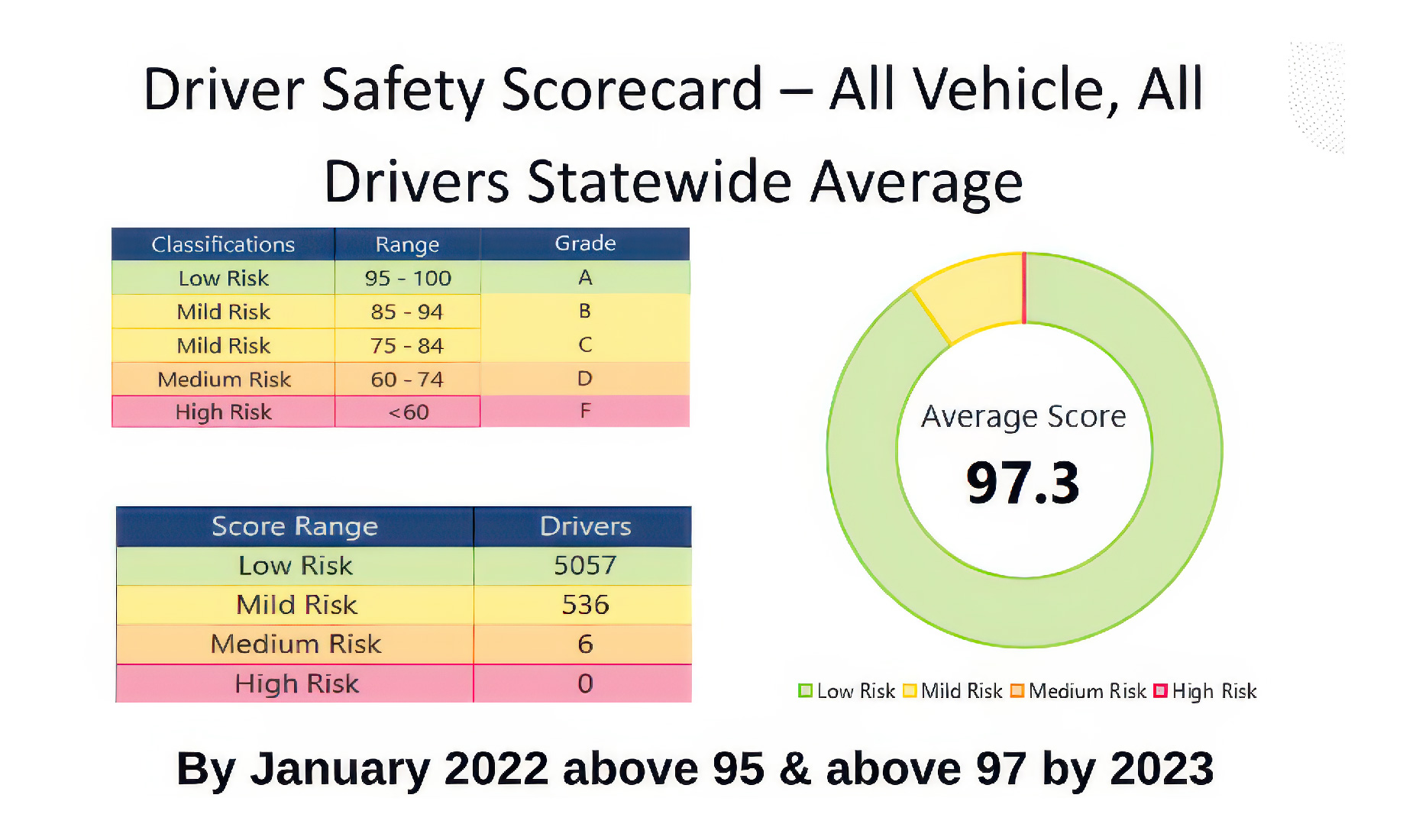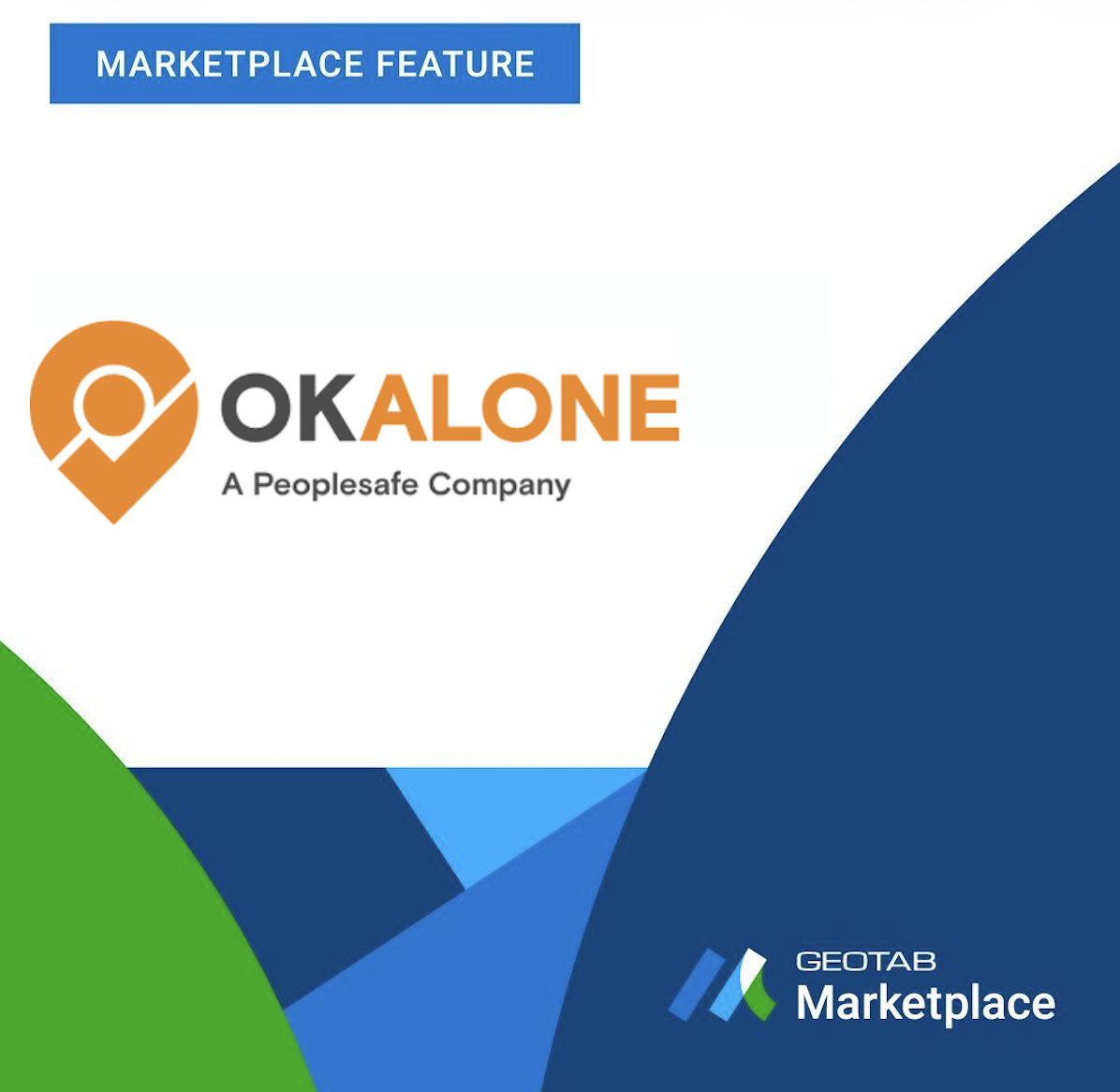Creating a fleet safety culture that’s built to last: Lessons from Missouri DOT and NYC
This article dives into how fleets like Missouri Department of Transportation (MoDOT) and New York City transformed their safety cultures using telematics, achieving remarkable results like a 20% surge in driver safety scores and an estimated $1 million in savings from fleet liability claims.

Jul 7, 2025

Key Insights
- Explore the three pillars of road safety that NYC established during their telematics implementation
- Learn the seven elements of a successful fleet safety program, as revealed by Missouri Department of Transportation’s (MoDOT) experience with telematics
- See how MoDOT increased driver safety scores by 20%, improved safety belt usage by 99.6% and saved $1.05 million on liability claims, while also achieving other powerful outcomes
In 2022, U.S. vehicle collisions tragically resulted in 42,514 fatalities. Globally, a life is lost on the road every 24 seconds. Beyond the human cost, these incidents mean rising liability costs, operational disruptions and damaged reputations for public fleets like yours.
But what if you could significantly change this narrative?
This article dives into how fleets like Missouri Department of Transportation (MoDOT) and New York City transformed their safety cultures using telematics, achieving remarkable results like a 20% surge in driver safety scores and an estimated $1 million in savings from fleet liability claims. Discover their proven strategies and learn how to build a lasting safety culture in your own operations.
MoDOT’s fleet safety journey: A case study in transformation
With its massive 4,500-vehicle fleet, MoDOT sought to pivot to a more proactive, unified driver and fleet safety program. While some districts already used Geotab's telematics, the team aimed for a statewide expansion. In 2018, Paul Denkler, MoDOT’s Maintenance Liaison and Telematics Team Lead, was tasked with assembling a telematics team. By January 2020, MoDOT signed a statewide contract to integrate Geotab's hardware devices into every vehicle, with clear goals: To improve driver safety and better manage fleet safety, productivity and utilization.
One year in, their fleet safety scores hovered around average ranges, with an average score of 84.7. For MoDOT, this threshold wasn’t good enough. They committed to improving their score through a combination of data collection, coaching and policy creation.
By January 2022, their score across their entire fleet had risen to 95, and then climbed above 97 by 2023. “We were about right at a score of 80 out of 100 our first year in,” Denkler said. “We were about C students, in how we were performing on driving. And today, our score across our entire fleet averages 97.3.”
MoDOT used Geotab’s driver safety scorecards to closely monitor trends and the effects of changes. The top rules factored into their driver safety scores were:
- Backing up when leaving
- Harsh braking
- Harsh cornering
- Speeding
- Seatbelt usage
Tracking the total number of exceptions and their percentage breakdowns made it easier to pinpoint the most pressing issues and measure their reductions over time. Through the dedication of their drivers, MoDOT was able to sustain the average score of 97.3 over an entire year and 39.5 million miles logged. As a result of their significant advancements in safety, they were honored with Geotab’s Safety Champion Award at Connect 2024.
By implementing policy changes, supported by impartial data from Geotab’s fleet management solution, MoDOT experienced a:
- 20% increase in driver safety scores
- 99.6% improvement in wearing safety belts
- 99.7% reduction in +6 mph speeding events
- 100% reduction in +15 mph speeding events
The benefits didn’t stop there. MoDOT also achieved significant cost savings and risk reduction advantages, including:
- 25% decrease in the number of fleet liability claims
- 50% decrease in the severity of fleet liability claims
- $1.05 million in savings on liability claims
- 50,000 labor hours reduced, resulting in $2.5 million annual savings, from automated data entry of mileage and hours
- 10% reduction in fuel usage, resulting in $1.3 million in annual savings, from decreased idling in heavy-duty trucks
- 13% reduction in general liability (Tort) claims, resulting in over $1 million in annual savings
- 6:1 ROI from implementing Geotab
MoDOT’s path to greater fleet safety wasn’t without its challenges. However, their journey demonstrates that building a time-tested fleet safety culture is possible with the support of technologies and department-wide teamwork. As Denkler noted, “At times, it would feel like we took one step forward and two steps back. But we worked through all of them and were able to get through just about everything we wanted to accomplish.”
MoDOT’s remarkable safety transformation wasn’t accidental. It was built on foundational elements that any fleet can adopt.
The three pillars of success for a safer fleet
Fleet safety must become a core value that’s baked into your agency’s mission statement. And for it to truly take root within your organization, your safety program must be built upon three essential pillars. These pillars, as outlined by Eric Richardson, Retired Deputy Chief Fleet Management Officer for New York City (NYC), will help you achieve greater success on your fleet safety journey:
- Leadership - Building a dedicated team of leaders to oversee your fleet safety program and monitor its performance is crucial. This includes establishing an experienced team lead for your chosen technologies and collaborating cross-functionally to maintain the program over time. Continued leadership support establishes a commitment to safety that infuses the organization from the top down. According to Richardson: “I look at safety leadership as fairness, openness, capability, unity and sustainability.”
- Training and development - Educate your drivers and fleet managers on the benefits of a fleet safety program, emphasizing how it protects them, rather than punishes them. Identify the tools and technologies needed to advance your safety goals and make sure everyone is trained on best practices. One-on-one coaching sessions can also provide a valuable forum for drivers to air concerns, review their driving and gain motivation. It's also crucial to discuss the real-life implications of speeding, distracted driving, and other dangerous behaviors, so drivers truly understand the tragic outcomes that can occur. In Richardson’s view: “Training and defensive driving programs are a basic building block to providing drivers with the tools to preemptively understand their hazards.”
- Technology - Using telematics is fundamental for tracking vehicle operation, measuring predictive collision risk, identifying high-risk drivers and benchmarking results. As Richardson emphasizes: “The most important thing is, make sure that you can get immediate and automatic feedback, so that the most dangerous behaviors can be addressed as close to real-time as possible.” Implementing these tools makes it easier to limit safety risks and verify that new policies are yielding measurable results.
With these foundational pillars in mind, how can you start constructing or improving your own fleet safety program? Here’s a practical four-step guide to do so, drawing from the experiences of MoDOT and NYC.
Learn more about how to transform your fleet’s safety by watching our full on-demand webinar.
Building your fleet safety program: A four-step guide
Step 1: Setting clear goals
As with any program, setting clear objectives is the best place to start. Analyze collision probability and driver behaviors to pinpoint areas that need the most improvement.
Once key areas are identified, create SMART goals to measure progress:
- Specific: Set a goal to reduce speeding by X%
- Measurable: Leverage telematics data to track speeding changes over time
- Achievable: Compare your fleet’s performance against safety data benchmarks from similar fleets
- Relevant: Verify that goals align with leadership or department-wide objectives
- Time-bound: Set a timeframe for the goal, such as decreasing speeding incidents by X% within Y number of months
Step 2: Securing commitment from leadership
Buy-in from leadership is essential. An effective fleet safety program requires active prioritization from the top, which will then trickle down throughout your agency. This commitment also comes in the form of tangible investment and publicly voiced support of the initiative.
In MoDOT's case, leadership invested in telematics to achieve their fleet safety goals. To help counter employee concerns over a technology-driven safety program, Denkler’s director reiterated that the agency was not asking drivers to do anything that wasn’t already required by state law. Similarly, NYC invested in telematics, but had to generate buy-in across both leadership and unions first. In your own fleet, it’s critical to emphasize that your safety program won’t be used for micromanagement. Raise driver support by communicating that your program will not ask anything more of them than to consistently obey the law.
By stressing the importance of fleet safety (and fleet management tools) to every individual in your agency, as well as clearly identifying a plan for safer driving and allocating budget, you will prime your program for lasting success.
Step 3: Careful vendor selection
With leadership’s support and clear goals, you’ll want to choose a telematics provider whose platform will meet both your current and future needs. Identify the most pressing requirements for your fleet safety program and make sure that a platform you’re evaluating includes every capability needed to meet them. For example, you may want a platform that provides AI-enabled predictive collision risk rates to help you accurately gauge collision probability.
The path to increased fleet safety is also not always linear. When obstacles arise, you need a telematics provider with strong after-sales support who remains engaged, bringing solutions to your challenges and unique ideas to advance your safety goals through technology.
Step 4: Safety audits
Where are you currently on your fleet safety journey? It's a tough question to answer without a thorough safety audit. Tools like telematics help you assess your current position relative to your fleet safety goals and identify how to close any gaps.
It's crucial to continuously audit your fleet’s safety performance over time with fleet technologies. Once a goal is met, set new ones to continuously enhance your program. As highlighted in the case study, MoDOT used Geotab to find their baseline fleet safety scores, which hovered around the 80s and indicated average performance:

By January 2022, their score rose to 95, and then to 97.3 by 2023, which was sustained for over an entire year.

This example demonstrates how an effective safety program can yield year-over-year improvements with dedicated focus. However, once your fleet safety program is built, it will need regular upkeep and attention. You’ll want to remain committed to continuous safety improvement.
The seven key elements of continuous safety improvement
Once your program is established, the journey towards safety is ongoing. Consider these seven key principles from Denkler for continuous improvement and lasting success:
Clearly communicate
Open communication between employees, unions, fleet managers and drivers is essential for adopting safety technologies and generating buy-in. Clearly define your goals and implementation strategy, and communicate these insights across your entire team. Pro tip: Overcome objections by involving departments and unions from the start. After an audit, gather input from drivers (your boots on the ground) to craft policies and coaching strategies that truly resonate.
Develop your drivers
Empower drivers through in-cab alerts for unsafe driving, data-driven coaching and other technologies like simulators and communication platforms. MoDOT, for instance, used Geotab GO Talk to provide audible anti-speeding reminders. Give your drivers the tools, guidance and motivation to continuously improve their performance.
Instill accountability
Ongoing accountability is necessary to sustain your program. MoDOT achieved this by providing specific key fobs for individual driver identification. If a driver triggered a dangerous exception, they were required to explain why. Automated email alerts keep speeding in check, and with non-private safety scores, driving performance is public knowledge. This transparency, combined with coaching and disciplinary action for egregious cases, has helped them build a strong fleet safety culture.
Recognize improvement and foster friendly competition
Make safe driving a rewarding experience. MoDOT’s public display of safety scores has fostered a culture of friendly competition, as drivers want to beat their peers. Recognizing drivers for safe performance makes them feel valued and encourages active participation in a safer fleet.
“The safety scores, we print out. Everybody can see their safety scores,” said Paul. “So, when there’s a building of 20-30 people, [...] it does spark some friendly competition. Folks want to beat their buddy [...] and there’s also a little bit of that peer pressure. If you’re the one at the bottom, everybody’s going to see.”
Publicly display fleet safety results
A public-facing tool for fleet safety monitoring can build stronger trust with citizens. MoDOT’s public tracker shows the community how many seatbelt and speeding events their drivers trigger. In providing public driver safety information, MoDOT is leading by example and demonstrating their proactive approach to a culture of safe driving.
Embrace teamwork
Throughout your journey, team-wide alignment on goals is crucial for a well-oiled operation. Everyone, from senior leadership to your telematics provider, should be fully committed to your safety objectives and actively involved in their achievement.
Avoid the yo-yo effect
Don't become complacent. Continuously analyze safety metrics and make sure you’re closing gaps. Celebrate milestones to make your team feel valued, but also note new best practices. Your safety program needs to be sustainable long-term. Learning from mistakes and maintaining a data-driven, proactive approach will enhance workplace safety, reduce collision risk and better prevent injuries.
Propel your agency’s safety initiatives forward today
From the experiences of NYC and MoDOT, it’s clear that telematics is a core component of an effective fleet safety program. With buy-in across your entire organization, as well as the right tools and strategies, you too can develop a strong culture of safety that’s built on data.
Are you ready to transform your fleet's safety culture? Watch the full on-demand webinar to delve deeper into MoDOT and NYC's strategies.

MoDOT & NYC’s road to safety
Watch the full on-demand webinar now to learn more about NYC and MoDOT’s advances in fleet safety.
Subscribe to get industry tips and insights

Content Marketing Manager at Geotab
Table of Contents
Subscribe to get industry tips and insights
Related posts

Collision avoidance systems: How fleets prevent incidents and improve safety
December 23, 2025
5 minute read
.png)
From the North Pole to the Highway: How AI and Predictive Insights Get Drivers Home for the Holidays
December 16, 2025
2 minute read
.jpg)
.png)
AI dash cams vs. traditional: Which delivers better fleet safety?
December 8, 2025
5 minute read

Elevating Worker Safety Through Simplicity: The OK Alone Story
December 3, 2025
2 minute read

The $4B Crisis: Video Intelligence as the Answer to Fleet Distraction
December 2, 2025
3 minute read